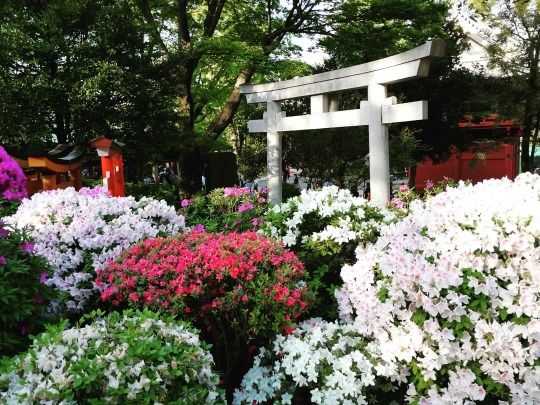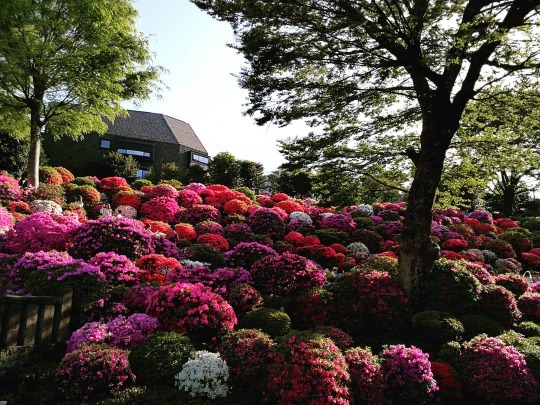#Bunkyo Azalea Festival
Photo


Bunkyō Azalea Festival
Early April — Early May
One of the five flower festivals of Bunkyō Ward, this time Nezu Shrine takes the spotlight. The Azalea Festival (つつじ祭), Tsutsuji Matsuri) has over 3,000 flowers and 100 varieties of Azalea (a genus of Rhododendron) that bloom from early April until early May. Performances take place in the grounds of the shrine and there is also small cafe area by the pond where you can enjoy manju dumplings, amazake, and complimentary green tea. The festival runs from 9:00 to 17:30 each day. A ¥200 admission fee is requested to walk through the azalea garden.
#Japanese Culture#Bunkyo Azalea Festival#Tsutsuji Matsuri#Nezu Shrine#Tokyo#Japan#Tsutsuji#つつじ#Azalea#Rhododendron#Flowers#Spring#Matsuri#Festival#Nippon#Bunkyō Azalea Festival#Spring Events
32 notes
·
View notes
Photo

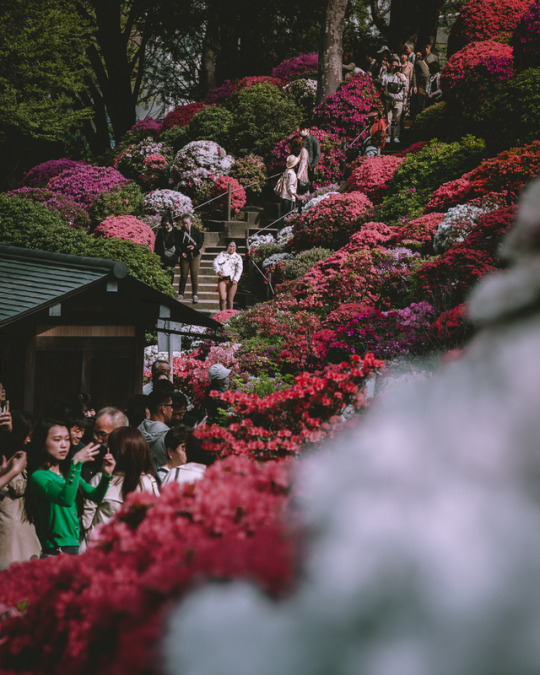
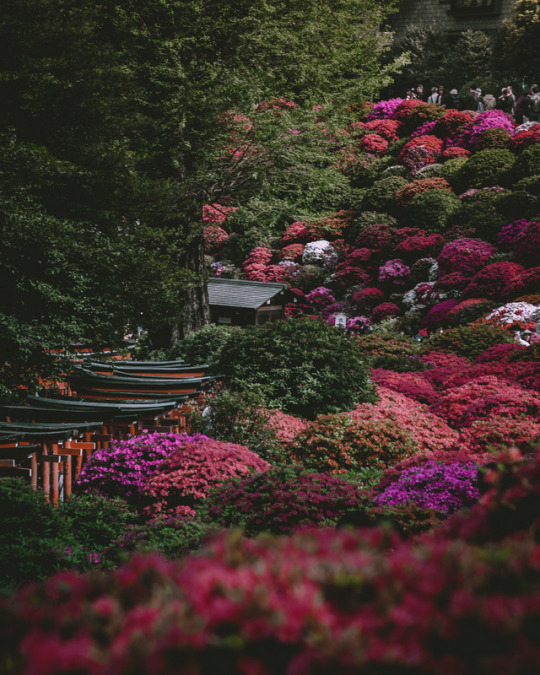
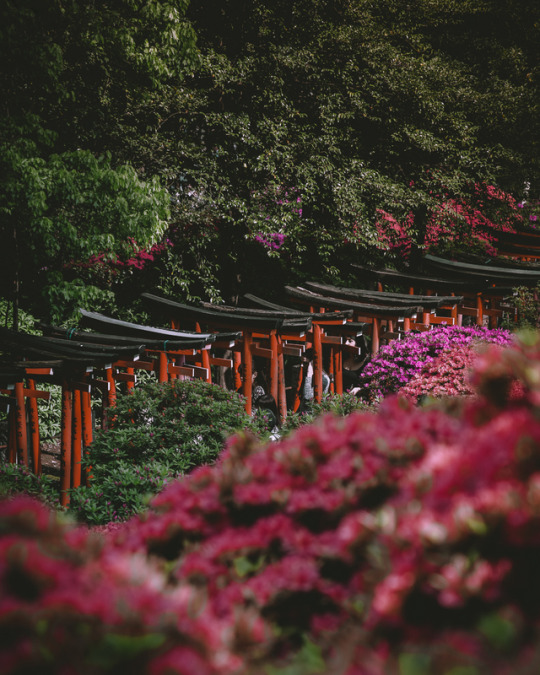

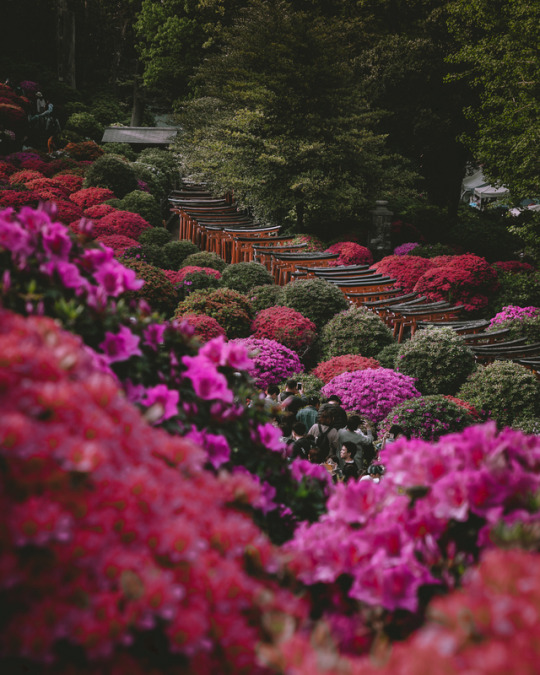
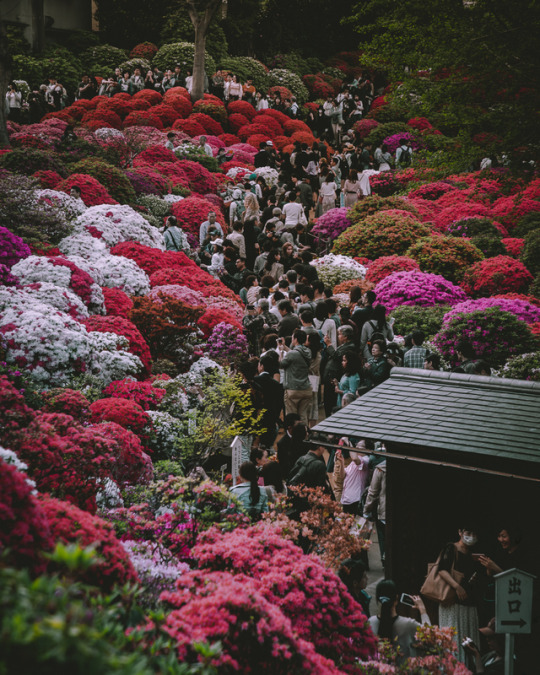


Bunkyo Azalea Festival, held at Nezu Shrine🌺
From mid-April until the early May, you can enjoy over 3,000 azalea bushes of 100 varieties with Torii Line in the background ⛩⛩
And you can find lots of stalls serving food, drinks and other items in the grounds 😋
640 notes
·
View notes
Note
Month, location and dress please ;w;
Thanks for the ask! Filling this out was really fun :) May I just say again that I really love weddings (especially Japanese Shinto ones)!
Month: April
Spring, in my opinion, is the most beautiful season in Japan (Autumn is a close second). It’s a symbol of new beginnings and a fresh start! The temperature in mid-April are also pretty moderate and the weather is nice!
Location: Nezu Shrine (Tokyo)
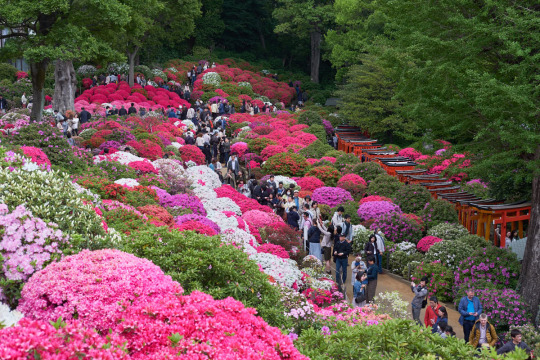

A beautiful (and very old) shrine located in Bunkyo ward of Tokyo. Famous for its hundreds of red torii, stunning latticed walls, lush greenery, and of course their azalea festivals! It’s a place steeped in history and very fitting for the heirs of two traditional families. May I also add that it’s a very “tucked” away shrine; lots of privacy :)
Dress: Shiromuku
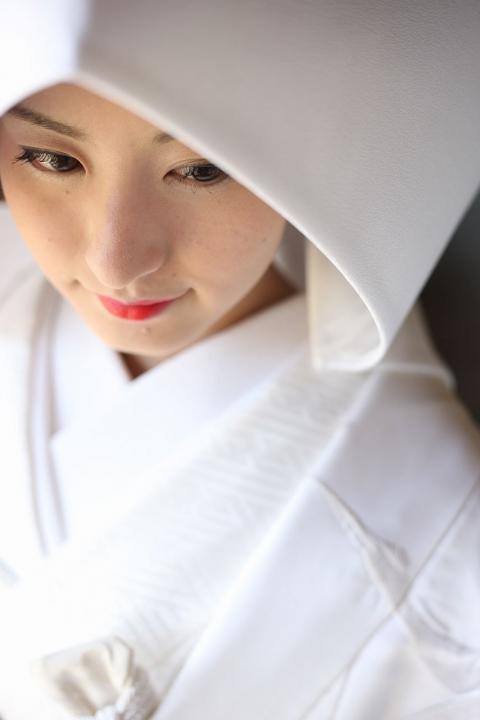
Nene would definitely wear a beautiful, pure white, thick, brocade shiromuku. Like there is no alternative imo… It would have embroidered silk cranes (signifying good marriage and family) on the uchikake and she’ll wear gold, beady kanzashi’s (hairpins) in her hair. Of course, to top it all off, the wataboshi (cotton hat) will be her headpiece.
#isshiki satoshi#kinokuni nene#nene kinokuni#satoshi isshiki#isshinene#isshikuni#ask#asks#headcanon#shokugeki no soma
16 notes
·
View notes
Text
april 22: 文京つつじ祭り
My lovely RA, Yuka, asked me to join her for the Bunkyo Azalea Festival (文京つつじ祭り) and of course I couldn’t say no! :) The photos online made the azaleas look surreal, so I had to see it for myself. I am not sure if I already mentioned this, but Japan has so much more to offer than just sakura. There are always different flowers in bloom all year long. It’s such a beautiful country.

When we arrived, there were so many stalls being set up. The stall that caught my eye was the 金魚すくい! When I was younger, I remember always wanting to try it. You get a paper ladle that you can use to try to catch the goldfish of your choice. It’s 300 yen and the sign says even if you can’t catch any, they will still give you 2 goldfishes. I thought that was very nice of them!! Too bad I don’t have a place to take care of them, or else I would have tried it.
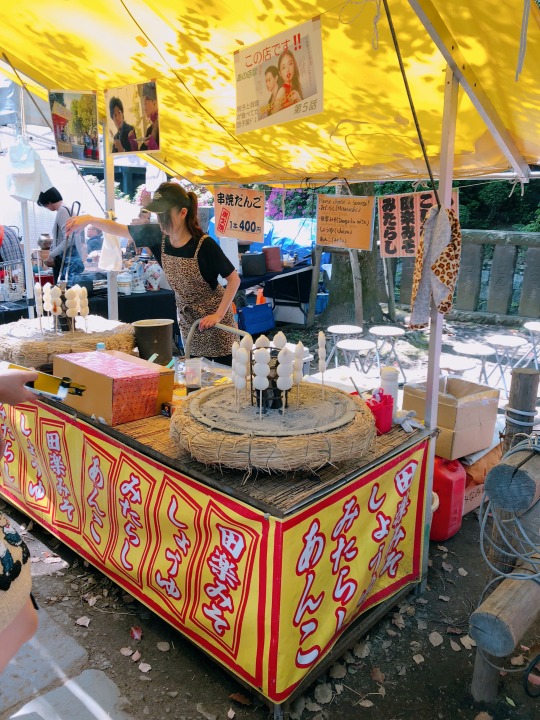
It isn’t a festival if there aren’t any food stalls! I wish I did a better job taking photos of the stalls, but here is 串焼き団子 (Kushiyaki Dango). There was also たこ焼き、お好み焼き、焼きそば、かき氷、and more だんご in the area! Basically enough food to keep you full till dinnertime! There were also stalls that were selling trinkets if you’re interested in those too.

As we step closer to the azalea garden, we’re able to see torii gates and a place where people can pray. Did you notice the koi in the water? :)
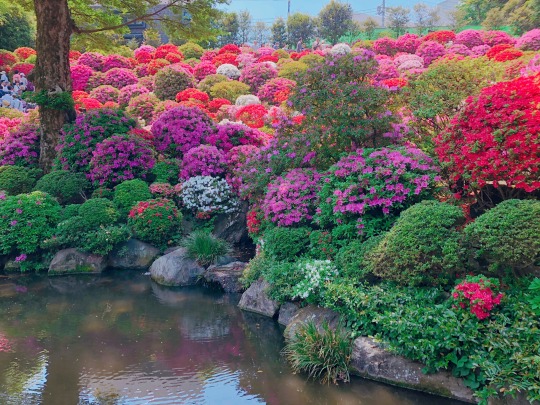
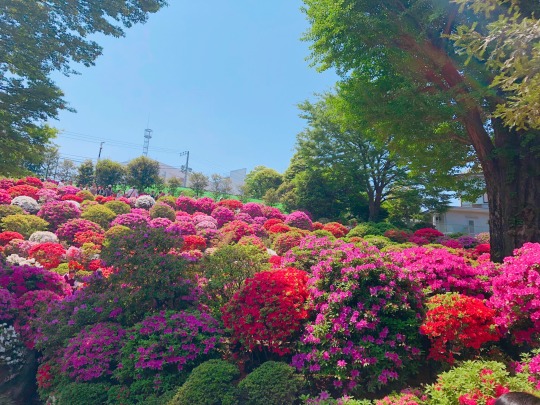
It is said that this azalea garden is over 300 years old with over 3,000 azalea plants. If you want to get a closer look at the azaleas, there is a 200 yen entrance fee. Definitely worth it if you already made the trip to the area!
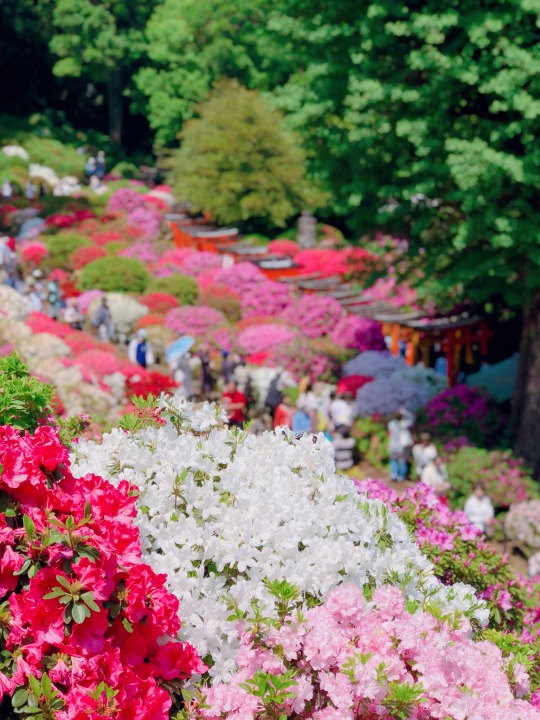
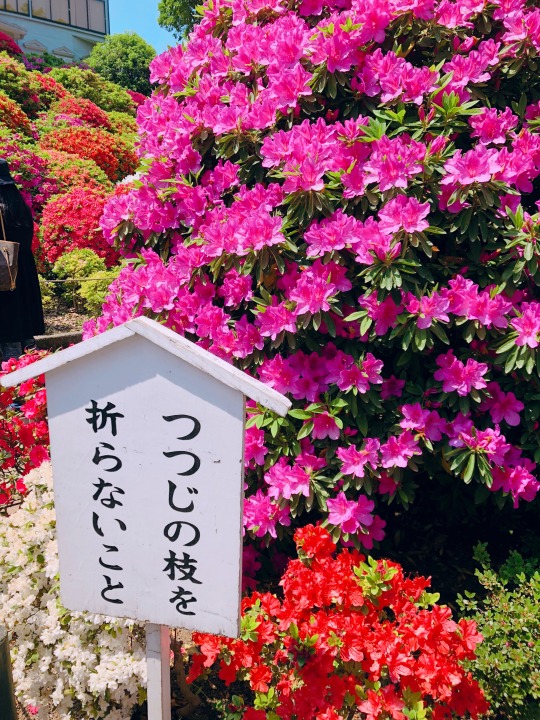


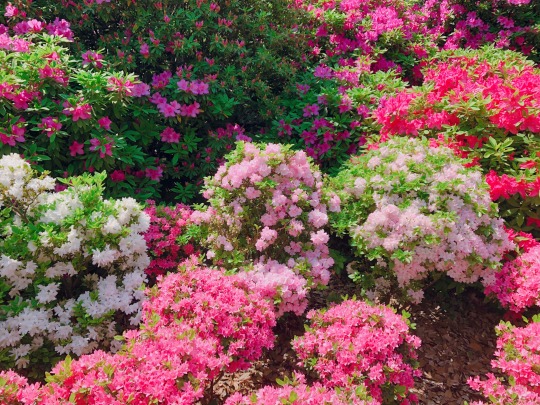
Azalea spam! I hope you enjoy flowers and nature as much as I do!
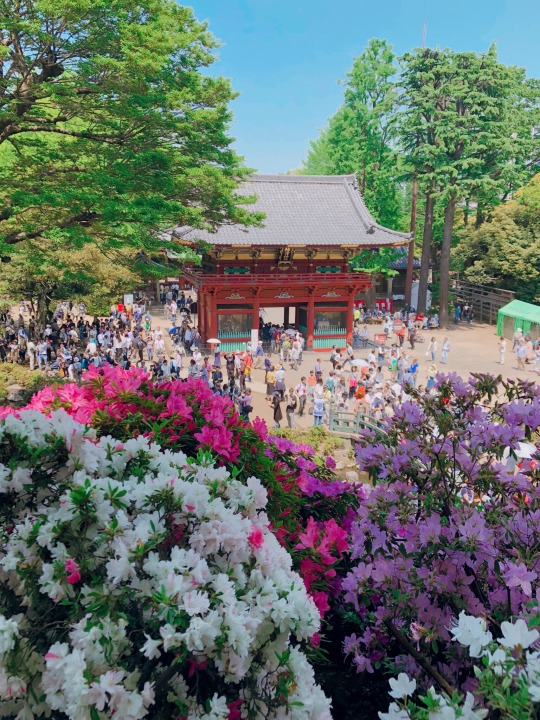

This is 根津神社 (Nezu Shrine). It’s super crowded because of the festival, and the 御朱印 line was also super long. I decided to get おみくじ for 100 yen and received 大吉!! They actually translated the fortune into English, Korean, and Chinese too. I always wanted to test my luck to see what I would get but held back, because if I wasn’t lucky, I didn’t want to be told in fine print that I was unlucky. 笑笑 But if you get a bad fortune, you tie it at the shrine so you don’t take the bad luck with you. Take it with you if it is a good fortune. :)
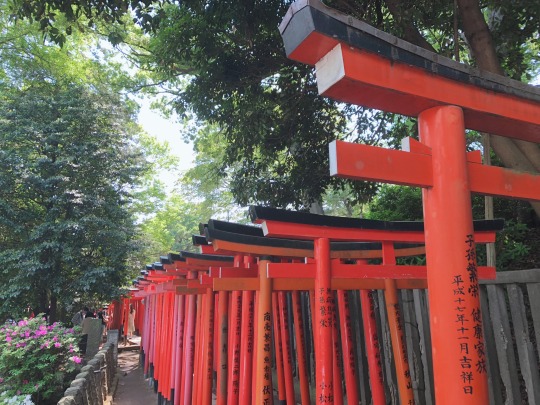
Ending this post with the trail of torii from earlier. Hope you enjoyed seeing the beauty Japan has to offer during the springtime!
3 notes
·
View notes
Photo
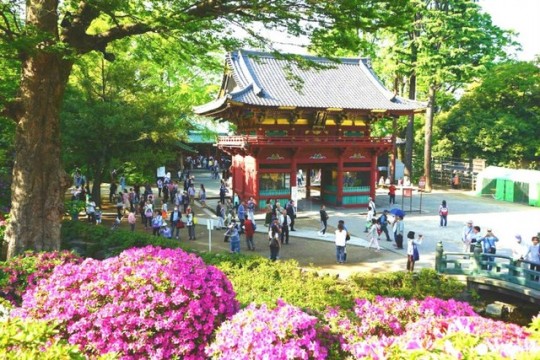
A Flower Paradise In Tokyo! The Azalea Festival At Nezu Shrine
The Azalea Festival at Nezu Shrine in Tokyo’s Bunkyo ward is held every April and May, attracting visitors to this otherwise fairly unknown but historically-rich and beautiful shrine. The gorgeous azalea flowers are a sight you just have to see!
https://matcha-jp.com/en/6045
16 notes
·
View notes
Photo
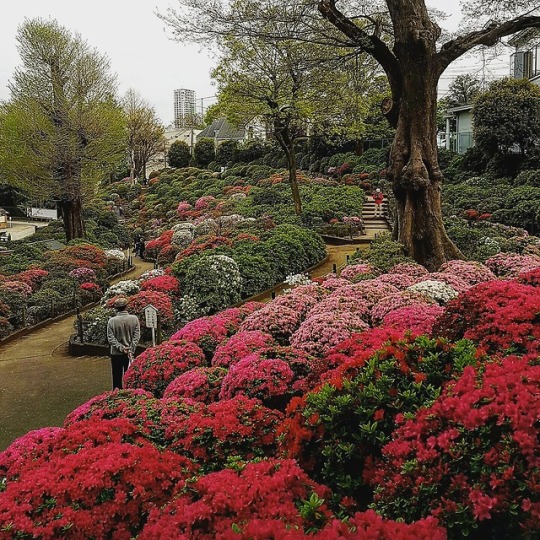
Do you know there are more flowers blooming after Sakura? One of them is Japanese favorite: Azalea (Tsutsuji) The most famous event is Azalea festival held nearby our neighborhood at Nezu Shrine @ Bunkyo-ku
2 notes
·
View notes
Text
Azalea
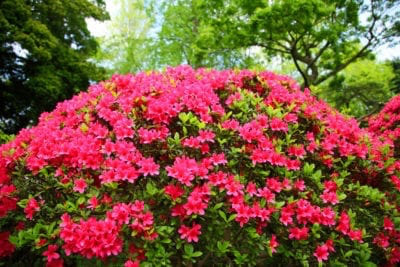
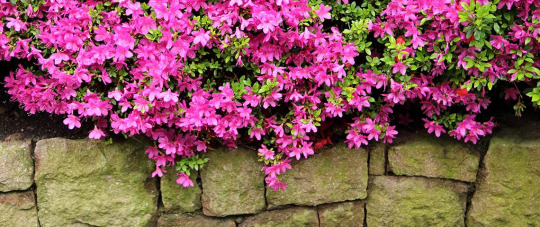

Motoyama, Kōchi also has a flower festival in which the blooming of Tsutsuji is celebrated and Tatebayashi, Gunma is famous for its Azalea Hill Park, Tsutsuji-ga-oka. Nezu Shrine in Bunkyo, Tokyo, holds a Tsutsuji Matsuri from early April until early May. Higashi Village has hosted an azalea festival each year since 1976. The village's 50,000 azalea plants draw an estimated 60,000 to 80,000 visitors each year.
0 notes
Photo
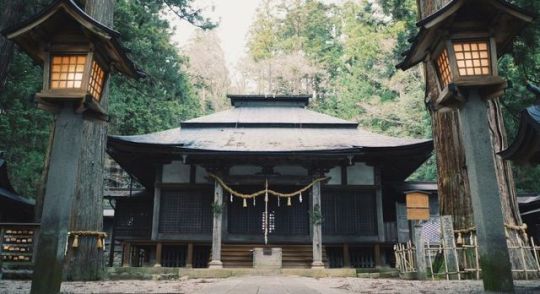
Deciding which are the top 10 temples in Japan, a country which has many thousand temples and shrines covering its landscape, is no small task. Yet, visiting one can be a profound experience. Walking through the immaculate gardens of a Japanese temple, or passing through its threshold where pilgrims and worshipers gather, or leaving offerings just like the Japanese do, can give you an insight into the culture, traditions, and history of Japan which you won’t find anywhere else. No Japan vacation is complete without a visit to one of these top 10 temples in Japan.
To experience a religious site is to experience the real cultural center of Japan.
Religion has always been a major influence on the culture of Japan. Elements of the two most popular religions in the country, Shintoism, the indigenous religion of the country, and Buddhism, have had an impact on everything from art in Japan (you’ll notice countless pieces of religious artwork on your travels around the many shrines and temples of Japan) to Japanese politics. Indeed, during the heyday of the Japanese Empire, people believed that the emperor at the time was divine, himself a living god. This is an idea that is deeply connected to Shintoism.
To experience such a religious site on a Japan tour is to experience the real cultural center of classic Japan. If you plan to visit one or more Japanese temples, monasteries or shrines, you’re in luck, for below is a list of the top 10 temples in Japan.
Before we begin: Difference between Shrines, Temples, and Monasteries
Leaning more about the purpose and significance of each place you visit can make . your journey all the more rewarding.
Shrines in Japan, are almost exclusively Shinto, and are dedicated to the worship of a single spirit or deity. Shintoism is a religion built on ceremonies and rituals, which take place within the shrines.
Temples in Japanese are Buddhist places of worship. Buddhism may not have originated from Japan (like Shintoism does), but about 40% of the population of Japan are Buddhist with beliefs and practices of this religion deeply ingrained in everyday life.
Monasteries in Japan, like temples, are usually also Buddhist. Some forms of Buddhism are monastic, largely practiced by monks or nuns in monasteries. In places such as these, monks study, live, and worship. Many of these are open to the public and you can choose to stay in a Japanese monastery too!
Travel Tip: There is no formal dress code for visitors to Japanese temples and monasteries. However, it is important to take your shoes off before entering Buddhist temples. Normally traditional sandals are available at the entrance for you to borrow.
Discover our list of top 10 temples in Japan – bold, beautiful and historic, these may just take your breath away!
Top 10 Temples in Japan
10. Hida-Sannogu Shrine in Takayama
Hida-Sannogu located in Takayama city
The Hida-Sannogu is shaded by tall trees that seem to dwarf it. Aside from its natural beauty, the shrine is most known for its role in the Shinto Sanno Matsuri festival, one of the three most important festivals in Japan. Performed for centuries, the festival includes a long parade that snakes through Tokyo, culminating in a ceremony at the historic Hie-Jina shrine in Tokyo. The shrine also houses famous marionettes used in the festivities. While it’s much more modest than some on this list, a visit can make for a nice change of pace if you’re in the area.
9. Hasedera Temple in Kamakura
Hasedara Temple in Kamakura
Buddha statues at Hasedara Temple - the largest Buddhist pilgrimage site in the region
View of Kamakura city and Sagami Bay from Hasedara Temple
At the bottom of the hill is an old, classic Japanese garden for you to explore and unwind in.
Hasedera Temple belongs to the Jodo sect of Japanese Buddhism, dedicated to the Goddess of Mercy. The temple is famous for housing a tall eleven headed wooden sculpture of the goddess. As the story goes, many hundreds of years ago, a monk carved twin sculptures from a camphor tree. While one was enshrined in Nara city, the other was set adrift to find its own place in the world. This second statue washed up near Kamakura and a temple was built for it. Thus, to look at the statue is to witness a real Japanese legend firsthand!
At the small museum within the temple complex you can see treasures of Japanese Buddhism and learn about the history of the temple. Then enjoy a meal or a drink in the restaurant, before soaking in the wonderful view of Kamakura from your vantage point. At the bottom of the hill is an old, classic Japanese garden for you to explore and unwind in.
8. Enryaku-ji in Kyoto
Enryakuji Temple near Kyoto
View from Mount Hiei in Kyoto Prefecture
Wooden worship board at Enryakuji Temple
Statue of a fox near Enryakuji Temple
Enryaku-Ji is a grand Buddhist Monastery located in the mountains of eastern Kyoto. It belongs to the Tendai sect of Japanese Buddhism and is one of the top Buddhist sites in Japan. A number of the most important and influential Buddhist monks and scholars lived, studied, and worshiped here. So, if you are interested in Japanese cultural history or Buddhist history, it’s an absolute must-visit!
Travel tip: Today the monastery complex is split into three areas: Todo, Saito, and Yokawa, each connected by a series of scenic walking routes. Seeing all three areas is recommended, as some are quieter than others and offer contrasting and enriching experiences.
7. Meiji Jingu Shrine in Tokyo
Meiji Shrine in Tokyo city
Gingko tree-lined street in autumn near the Meiji shrine of Tokyo
Barrels os sake donated to the Meiji Shrine
The Meiji Jingu in Tokyo is a shrine dedicated to the spirits of Emperor Meiji and the Empress Shoken. This shrine was originally constructed in 1925, six years following the death of the empress (Emperor Meiji had died earlier). It stands in a forested area of Yoyogi park, which provides a wonderful place to retreat to and relax after the hustle and bustle of Tokyo. As you approach the shrine, you’ll notice a large Torii gate, which is often found in Shinto shrines. The forest around it is composed of thousands of trees donated to the shrine from worshipers all over the country.
Travel tip: Visit on the first day of the new year and you can experience Hatsumode, the first prayers at a shrine in the year. If you don’t like crowds, be warned; at Hatsumode, a million people visit the shrine. But this is a key date in the Shinto Calendar, and if you are looking to experience religious life in Japan, it is not to be missed.
6. Kiyomizu Temple in Kyoto
Sunset at Kiyomizu Temple in cherry blossom season
Kiyomizu temple in autumn season
National park around Kiyomizu temple
Though this temple is located well within eastern Kyoto, it peeks out through lush green woodland, and pink cherry blossom. Drink from the small, clean waterfall at the bottom of the temple – its waters are believed to possess many spiritual benefits such as longevity, success, and love (drinking too much is seen as greedy!). The temple is actually named after the waterfall; its name “Kiyomizu” means “pure water”. Just off the main hall is a large wooden stage which gives you a picturesque view of Kyoto and the beautiful scenery around you. It is truly a peaceful place to visit during your Japan holiday.
5. Fushimi Inari Taisha Shrine
Torii gates at the Fushimi Inara shrine
The Fushimi Inara shrine in Kyoto
At the main gate of Fushimi Inara
The Fushimi Inari Taisha is also located in Kyoto. This shrine, in particular, is famous for its tunnel of red Torii gates, which lead to the main complex. The shrine is located at the foot of Mount Inari – a part of the shrine’s grounds.
The main walk to the top of the mountain is a pilgrimage route, and walking up it, you’ll likely see dozens of small statues and smaller shrines. Much of the route is under the cover of a long row of Torii gates. Hiking up and back may take some time and effort but combining this with a visit to the shrine can make for a great day out. What’s more, at the top of the mountain, you’re rewarded with a grand view of Kyoto.
4. Classic Japan at the Itsukushima Shrine
Centuries-old Itsukushima shrine on Miyajima island in Japan
Floating Gate of Itsukushima
Itsukushima Shrine
It’s famous Torii gate appears to almost float on the water during high tide like a mystical island.
The Itsukushima shrine in Hiroshima is visually rather striking. It constructed on a small inlet, a few meters from the coast. This unique location ensures that the shrine’s red color contrasts brilliantly with the blue seawater, and the green woodland nearby. When you look at it from the mainland shrine complex, it’s famous Torii gate appears to almost float on the water during high tide like a mystical island. Interestingly, the way the shrine appears to almost float, isn’t just a piece of design excellence, but was a conscious attempt by the original architect and builders to avoid disturbing the spirits who are said to inhabit the island – this shrine itself is dedicated to these spirits!
Since 1996, the shrine has been a UNESCO World Heritage site due to its history, its beautiful and harmonious architecture and its impact on Japanese culture. Today you can explore the shrine from the network of wooden walkways connecting all of the buildings in the complex.
Travel tip: can also explore the site from the comfort of a cruise which passes by the famous shrine.
3. Nezu Shrine in Tokyo
Nezu shrine in Tokyo
The grounds around Nezu shrine
Bunkyo Azalea Festival at the Nezu shrine
The Nezu shrine of Tokyo is located in the center of a gorgeous Japanese garden. It’s one of the oldest shrines in the city, dating back to 1705, and is almost certainly the most beautiful. You can approach it through an avenue of Torii gates which lead, through the trees, to the shrine proper. The building is in true Japanese style, with a pleasing juxtaposition of red, gold, and green, and a still water pond of Japanese carp at the foot of the shrine. Even to those not interested in Japanese religion or culture, visiting the shrine is a must due to its sheer beauty.
Travel Tip: Every April, people from across Tokyo and beyond flock to the shrine for the Bunkyo Azalea Festival to see blooms in vibrant shades of pink all around.
2. Senso-ji Temple at Asakusa in Tokyo
Sensoji Temple in Tokyo
Large Red Lantern at Sensoji Temple in Tokyo
Sensoji Temple against the Tokyo skyline
Over a thousand years old, the Senso-Ji temple in Tokyo is the oldest in the city and certainly the most famous. For many centuries, pilgrims from all over Japan have flocked to this site. Most of the modern structure was rebuilt after World War II. Despite this, it remains a place of outstanding historic and cultural significance – its reconstruction was seen as a metaphor for the country’s rebirth following the war. Much of this functioning Buddhist temple complex in Tokyo is open to the public and is a joy to explore. Most of the buildings are bright crimson in color and each is a masterpiece of Japanese architecture.
Travel Tip: Thanks to its central location, the Senso-Ji can be very easily accessed from anywhere in Tokyo.
1. Kinkakuji Temple or the Golden Pavilion in Kyoto
The Temple of the Golden Pavilion in Tokyo
Kinkakuji in winter
You’ll notice that each floor has an entirely different architectural style. It seems the more you look at it, the more you see.
The shining Kinkakuji Temple in northern Kyoto rests on the bank of a large pond and is flanked by lush trees and bushes, giving it a sense of tranquility. When you approach, your eyes will be drawn to the way the second and third floors are literally covered in gold which shines and glistens in the sun. Looking closer you’ll notice that each floor has an entirely different architectural style. It seems the more you look at it, the more you see. Although some parts of the temple are closed to the public, even simply walking around it and discovering the lush greenery around you is more than worth the effort.
Visit the most beautiful and historic monasteries, shrines and top 10 temples in Japan at your own pace. With a luxury tour of Japan tailored to you, immerse yourself in the culture and history of these great sites.
The post Top 10 Temples in Japan appeared first on Enchanting Travels.
0 notes
Photo
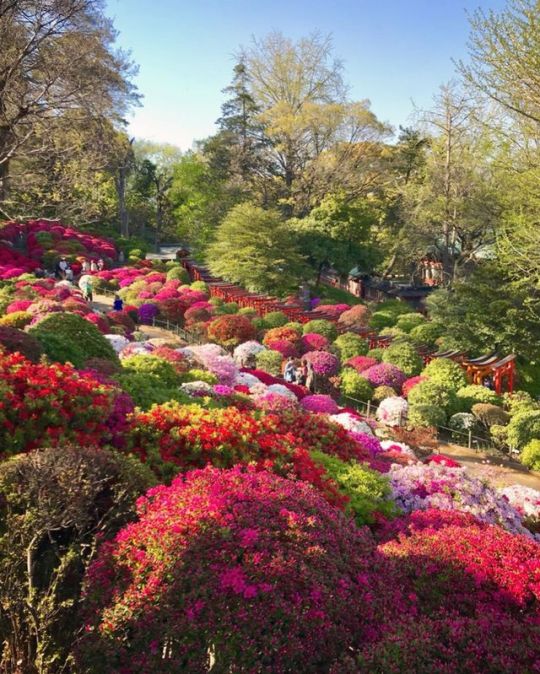
🌸The annual Bunkyo Azalea Festival at Nezu Shrine featuring these colorful giant azalea pom-poms 🌺 (at 根津神社 楼門) https://www.instagram.com/p/BxOJJKfn25e/?utm_source=ig_tumblr_share&igshid=gl7v27f63x3a
0 notes
Text
Things to do in Tokyo
hi everyone! i’ve decided to compile a list of things to do in Japan (specifically Tokyo/the surrounding Tokyo area) for anyone who’s travelling to Japan and is looking for ideas. for those who don’t know, i’ve been living in Tokyo for two months so far and will be here until august as an exchange student.
hopefully this can help those who are thinking of coming to Tokyo find some things to do! this will be a compilation of articles as well as personal experiences traveling, so let’s get started!
(this is in no way a complete list (very far from it), as there’s so much to do and i’m sure i’ll leave out some important places, but this is just a jumping off point for people. feel free to add on anything i missed!)
sightseeing:
Shinjuku Metropolitan Government Building, Shinjuku
many people flock to sightseeing places like Tokyo Tower and Tokyo Skytree, but these places tend to be pricey and also very crowded. the Shinjuku Metropolitan Government Building has free observation decks, one of which is open late. for those not looking to wait in long lines and wanting to spend their money elsewhere, this is a good option!
Sensoji, Asakusa
Sensoji in Asakusa is definitely a tourist hotspot, with tons of shops to find souvenirs and see the impressive Sensoji temple
Harajuku/Yoyogi Park, Shibuya
Harajuku is known for its youth fashion, usually on display on Takeshita Street. Takeshita street is lines with many shops with almost anything you can imagine. tip: the weekends are crazy busy, so it’s best to come during the week when most schools are in session
Yoyogi park, located a few minutes’ walk from Harajuku station, often features many events and festivals.
also in the area is Meiji Shrine
Shibuya Crossing, Shibuya
in front of Shibuya station is the ‘Shibuya Pedestrian Scramble’, where hundreds of people cross the street at a time. to get a good view of it, you can go to cafes surrounding the crossing for prime people-watching.
Ikebukuro
Ikebukuro, like Akihabara, is considered a large center for anime in Japan. it’s home to the main Animate store, which features 7 levels of anime merch and a floor with special displays. other highlights of Ikebukuro are two large shopping centers, Seibu and Tobu, as well as Bic Camera, as well as many stores in Sunshine City
‘hidden gems’ of Tokyo:
Jiyugaoka, Meguro
for those looking for a place a little more laid-back, Jiyugaoka features many shops and boutiques, often called the ‘Little Europe’ of Tokyo. Jiyugaoka also features the 800 year old Kumano Shrine
Nezu Shrine, Bunkyo
Nezu Shrine is one of the oldest shrines in the Tokyo area, and features an annual azalea festival in the spring which brings in many visitors. a noteworthy feature of the shrine is its many torii gates, usually found in Kyoto.
things near Tokyo:
Kawagoe, Saitama Prefecture (30 minutes from Central Tokyo)
Kawagoe’s main draw is a street lined with buildings from the Edo period, making it known as ‘Little Edo’. these shops feature a ton of food and shopping, from clothing to gemstones to Studio Ghibli merchandise and traditional Japanese sweets. there are also many shrines and temples to visit
other recommendations:
Bukamura, Shibuya
Ghibli Museum, Mitaka** (advanced ticket purchasing required and sold out very quickly)
Character Street, Tokyo Station
Nekobukuro, Ikebukuro
lists on things to do in Tokyo:
37 Cool and Unusual things in Tokyo
88 things to do in Tokyo
43 things to do in Tokyo
Things to do in Tokyo-Tripadvisor
Top 20 places in Tokyo chosen by travelers
helpful websites:
tokyocheapo
timeout
gaijinpot
for those looking for a place to start, here you are! there are a bunch of glaring places i’ve left out, but many of the links at the bottom explain these places if you’re looking for more information. i’ll add to this as i travel and explore more, but if anyone wants to add on their experiences and places to see, feel free! i’m always looking for suggestions
happy traveling!
3 notes
·
View notes
Text
Bunkyo-ku in Tokyo holds five flower festivals in a year. They are the Festivals of Plum Flower, Cherry Blossoms, Azalea, Hydrangea, Morning Glory & Mouth Cracker and Chrysanthemum. The third weekend of July is the time for Morning Glory & Mouth Cracker Festival. The venues are Denzu-in Temple for morning glories and Genkaku-ji Temple for mouth crackers.
I went there early in the morning so mouth crackers were not ready yet. So I skipped Gengaku-ji Temple and went to the Zenko-ji Zaka Slope. This slope stretches out the property of Denzu-in Temple. In the middle of the slope, there is Zenko-ji Temple which is also a part of the venue of Morning Glory Festival. This temple exhibits the unusual types of morning glories.
Go up the Zenko-ji Zaka Slope further more and in front of Denzu-in Temple, there is a very big Aphananthe aspera or oriental elm tree.
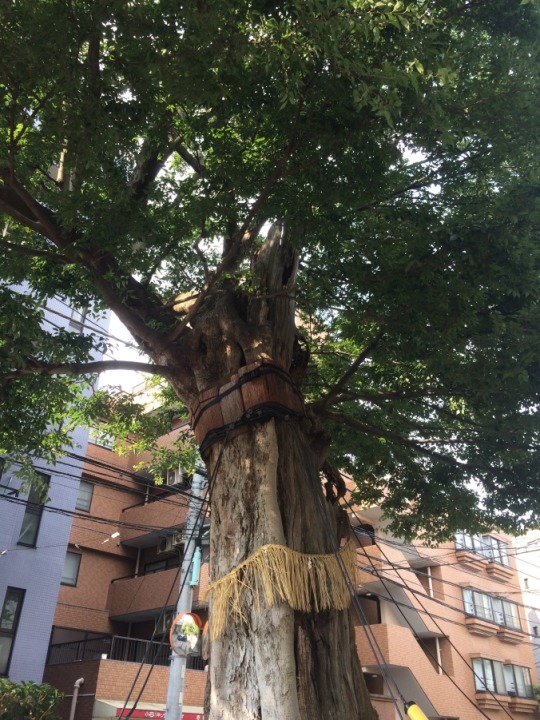
This tree is 400 years old. The top part was destroyed by the bombing during the World War II. But the new branches came out again and now forms a big shade of greens.
Inside Denzu-in Temple is the main venue of the festival where they sell morning glories.
The festival is held until tomorrow, July 23rd.
For More Information on Denzu-in Temple
Address: 14-6 Koishikawa 3-chome, Bunkyo-ku, Tokyo
Morning Glory Festival in Denzu-in Temple. #flowerfestival #morningglory #temple #tokyo #japan Bunkyo-ku in Tokyo holds five flower festivals in a year. They are the Festivals of Plum Flower, Cherry Blossoms, Azalea, Hydrangea, Morning Glory & Mouth Cracker and Chrysanthemum.
0 notes
Photo
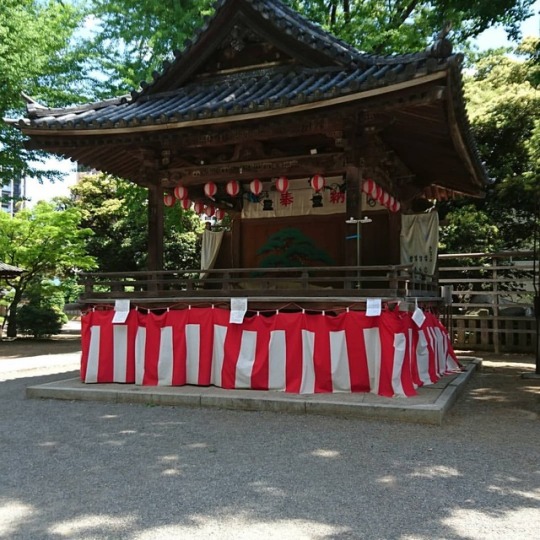
Went to the 🌼 festival at Nezu Shrine but they were all dead... except for one bush 😅😅 Got a discount for next year's festival tho... #winning ?? 😂😂 #nezushrine #tokyo #japan #flowers #selfie #festival #shrine #根津神社 #祭り #東京 #セルカ #花 (at Bunkyo Azalea Festival 2018)
0 notes
Photo
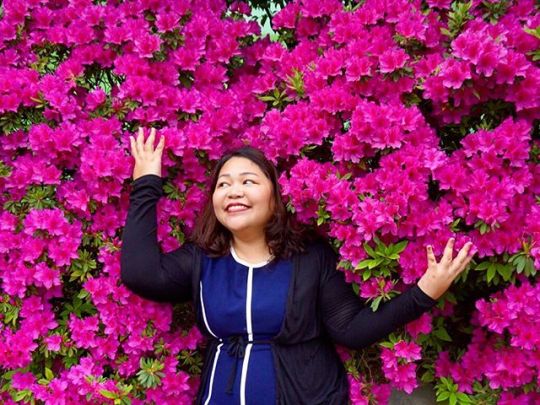
Bunkyo Azalea Festival @ Nezu Shrine https://ift.tt/2qU0GKP
0 notes

